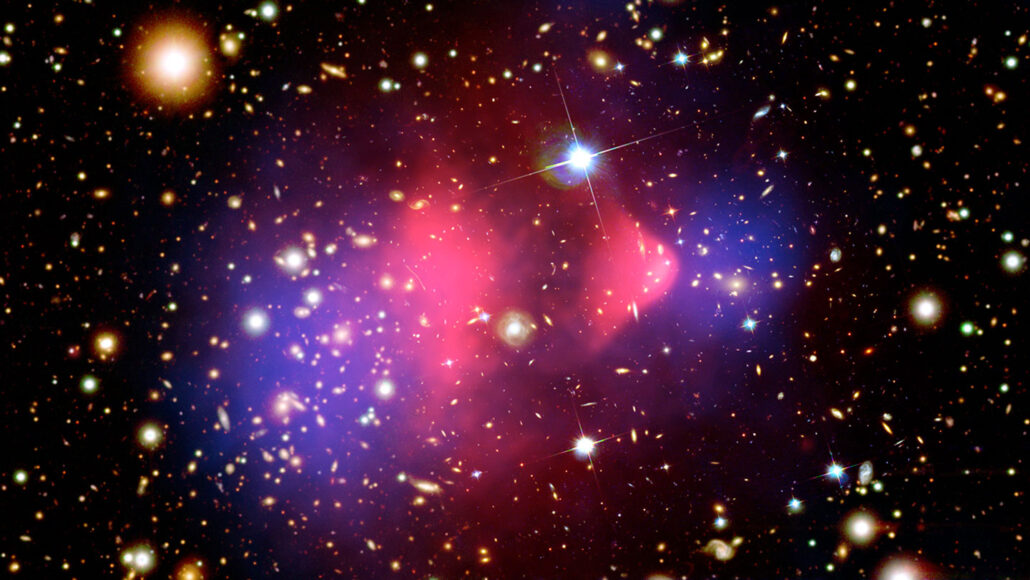astronomer: A scientist who works in the field of research that deals with celestial objects, space and the physical universe.
Big Bang: The rapid expansion of dense matter that, according to current theory, marked the origin of the universe. It is supported by astronomers’ current understanding of the composition and structure of the universe.
cosmic: An adjective that refers to the cosmos — the universe and everything within it.
cosmos: (adj. cosmic) A term that refers to the universe and everything within it.
dark energy: A theoretical force that counteracts gravity and causes the universe to expand at an accelerating rate.
dark matter: Physical objects or particles that emit no detectable radiation of their own. They are believed to exist because of unexplained gravitational forces that they appear to exert on other, visible astronomical objects.
field: An area of study, as in: Her field of research is biology. Also a term to describe a real-world environment in which some research is conducted, such as at sea, in a forest, on a mountaintop or on a city street. It is the opposite of an artificial setting, such as a research laboratory. (in physics) A region in space where certain physical effects operate, such as magnetism (created by a magnetic field), gravity (by a gravitational field), mass (by a Higgs field) or electricity (by an electrical field).
force: Some outside influence that can change the motion of a body, hold bodies close to one another, or produce motion or stress in a stationary body.
gravity: The force that attracts anything with mass, or bulk, toward any other thing with mass. The more mass that something has, the greater its gravity.
matter: Something that occupies space and has mass. Anything on Earth with matter will have a property described as "weight."
scenario: A possible (or likely) sequence of events and how they might play out.
stellar: An adjective that means of or relating to stars.
telescope: Usually a light-collecting instrument that makes distant objects appear nearer through the use of lenses or a combination of curved mirrors and lenses. Some, however, collect radio emissions (energy from a different portion of the electromagnetic spectrum) through a network of antennas.
theorist: A scientist whose work relies on mathematical analyses and computer models of events and physical objects or phenomena — not on experiments that test situations in the real world or that use testing and observations to collect data.
theory: (in science) A description of some aspect of the natural world based on extensive observations, tests and reason. A theory can also be a way of organizing a broad body of knowledge that applies in a broad range of circumstances to explain what will happen. Unlike the common definition of theory, a theory in science is not just a hunch. Ideas or conclusions that are based on a theory — and not yet on firm data or observations — are referred to as theoretical. Scientists who use mathematics and/or existing data to project what might happen in new situations are known as theorists.
universe: The entire cosmos: All things that exist throughout space and time. It has been expanding since its formation during an event known as the Big Bang, some 13.8 billion years ago (give or take a few hundred million years).









